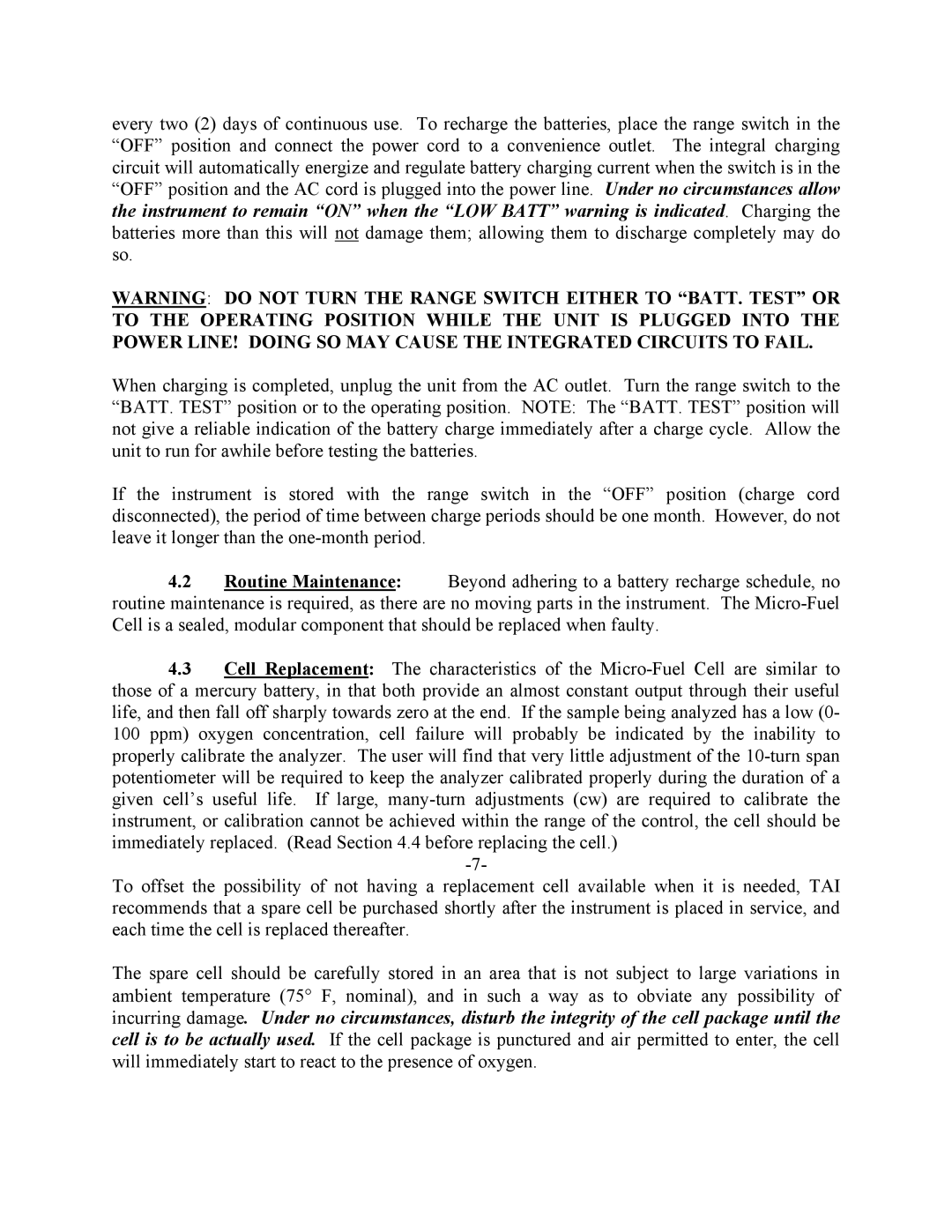every two (2) days of continuous use. To recharge the batteries, place the range switch in the “OFF” position and connect the power cord to a convenience outlet. The integral charging circuit will automatically energize and regulate battery charging current when the switch is in the “OFF” position and the AC cord is plugged into the power line. Under no circumstances allow the instrument to remain “ON” when the “LOW BATT” warning is indicated. Charging the batteries more than this will not damage them; allowing them to discharge completely may do so.
WARNING: DO NOT TURN THE RANGE SWITCH EITHER TO “BATT. TEST” OR
TO THE OPERATING POSITION WHILE THE UNIT IS PLUGGED INTO THE POWER LINE! DOING SO MAY CAUSE THE INTEGRATED CIRCUITS TO FAIL.
When charging is completed, unplug the unit from the AC outlet. Turn the range switch to the “BATT. TEST” position or to the operating position. NOTE: The “BATT. TEST” position will not give a reliable indication of the battery charge immediately after a charge cycle. Allow the unit to run for awhile before testing the batteries.
If the instrument is stored with the range switch in the “OFF” position (charge cord disconnected), the period of time between charge periods should be one month. However, do not leave it longer than the
4.2Routine Maintenance: Beyond adhering to a battery recharge schedule, no routine maintenance is required, as there are no moving parts in the instrument. The
4.3Cell Replacement: The characteristics of the
To offset the possibility of not having a replacement cell available when it is needed, TAI recommends that a spare cell be purchased shortly after the instrument is placed in service, and each time the cell is replaced thereafter.
The spare cell should be carefully stored in an area that is not subject to large variations in ambient temperature (75° F, nominal), and in such a way as to obviate any possibility of incurring damage. Under no circumstances, disturb the integrity of the cell package until the cell is to be actually used. If the cell package is punctured and air permitted to enter, the cell will immediately start to react to the presence of oxygen.
